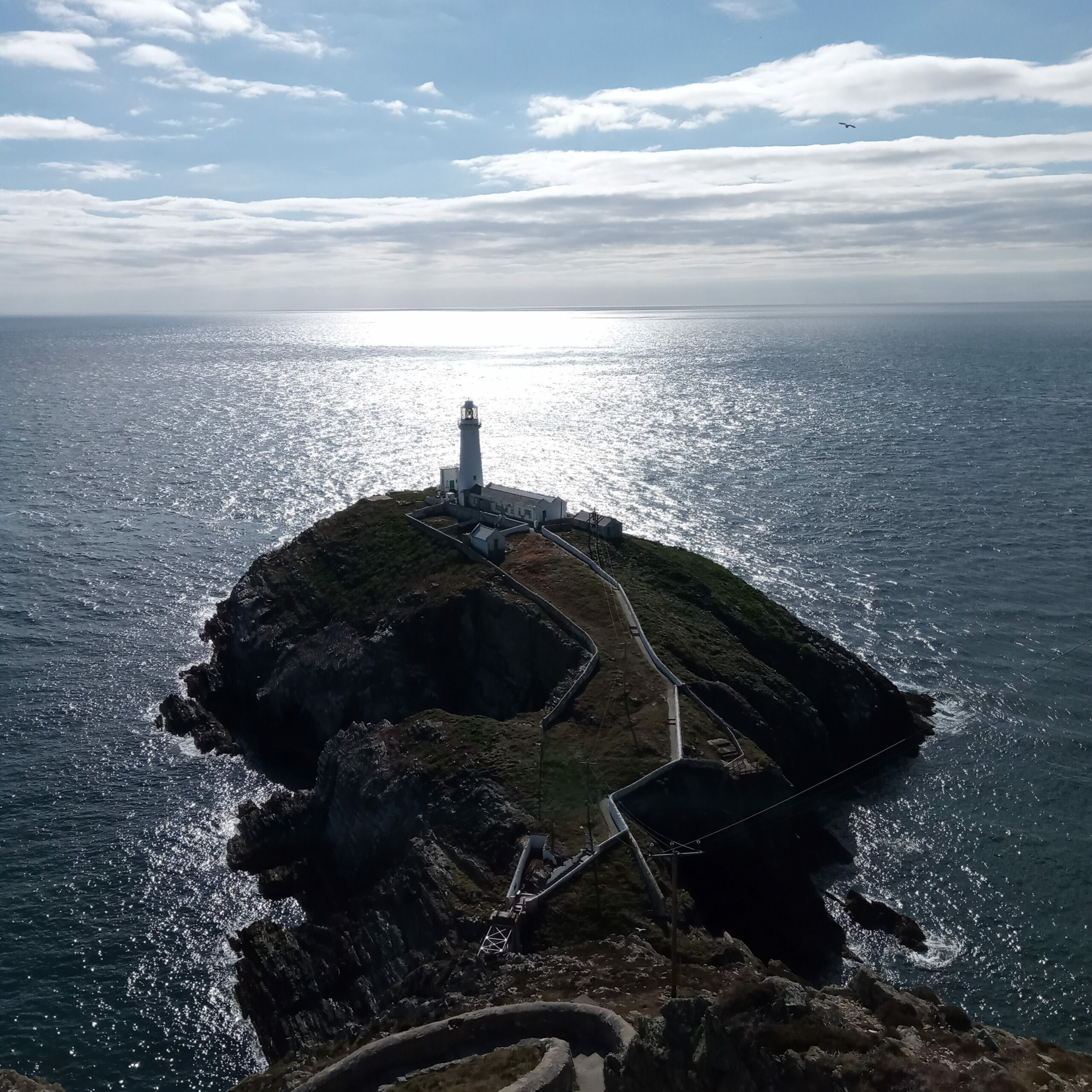

| Menter Mon |
| The Morlais tidal energy project is located in the Irish Sea, off the northwest coast of Holy Island, Anglesey, Wales. The project is situated on a 35 square kilometer area of seabed in the West Anglesey Demonstration Zone, which was designated by the Crown Estate in 2014 |
Project Facts and Figures
| Project Value | £5 Million |
| Project Duration | 26 months |
| Services | Electrical Infrastructure & Electrical balance of plant (EBoP) |
| Market Sector | Renewable Energy, Tidal Energy |
| DNO | Private |
| Number of Generators | 3 (Potential for 9) |
| Generator Capacity | 18 MW |
| Total Potential Capacity | 240 MW |
| Connection Voltage | 33 kV will go to 132 kV |
| Energy for | 180,000 Households |
| Length of Offsite 132 kV Cabling | 7 km |
Morlais Anglesey Tidal Energy
The Morlais Tidal Energy Project, spearheaded by Menter Môn, represents a landmark in the development of tidal stream energy. Situated in a designated tidal technology demonstration zone to the west of Holy Island, Anglesey, the project encompasses an area of approximately 35 km². With a potential capacity of up to 240 MW, Morlais is poised to become a global leader in tidal energy, integrating various technologies to harness the power of tides.
Morlais Project Background
In 2014, the Crown Estate selected the seabed off Holy Island as the West Anglesey Demonstration Zone to foster growth in the tidal energy sector. Menter Môn secured the lease through a competitive process, marking the inception of what is now known as the Morlais project.
The unique aspect of Morlais is its operational model: it leases space to multiple turbine development companies, allowing for a variety of tidal energy technologies to be deployed.
Morlais is the largest consented project of this type in the world so there is real potential here to put Ynys Môn and north Wales on the map from the perspective of this important growth sector.
Morlais Development Phases
Powersystems high voltage (HV) specialist electrical engineering team were responsible for the design, installation, testing and commissioning of the electrical infrastructure associated with the construction of the 18 MW Tidal Energy phase 1 scheme.
The Morlais Anglesey 240 MW Tidal Energy project is structured in phases to ensure minimal impact on marine wildlife and to accommodate future expansion.
- Phase 1: Involved the installation of up to three developers and an 18 MW connection to the SP Manweb (SPEN) distribution system at Parc Cybi. This phase is complete and operational, demonstrating the capability to generate and export 18 MW of tidal energy at 33 kV.
- Phase 2: Planned to facilitate an additional 120 MW capacity at 132 kV.
- Phase 3: Envisages a maximum generation capacity of 240 MW at 132 kV.
The careful design of Phase 1 includes infrastructure that supports future phases, such as a 7 km 132 kV cable, initially run at 33 kV, and a substation designed for expansion.
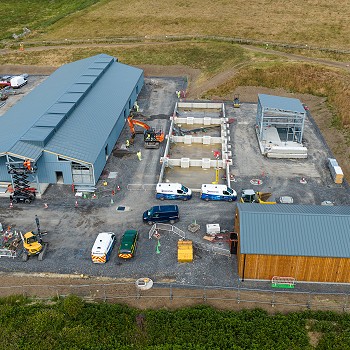
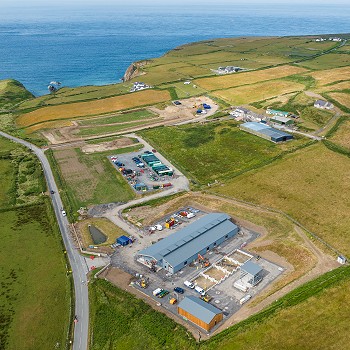
Powersystems’ role, scope of works and key design considerations:
Powersystems played a crucial role in the successful delivery of Phase 1. Their responsibilities encompassed the full scope of electrical infrastructure work, from design and installation to testing and commissioning.
Key Design Considerations:
Several critical design considerations were addressed to ensure the success and scalability of the Morlais project:
- Cable Routing and Installation: The 7 km 132 kV cable was installed through a challenging route, including narrow roads and coastal areas. This required meticulous planning and execution, particularly given the winter weather conditions.
- Substation Fit-Out: The Landfall substation was designed with flexibility in mind, incorporating space and facilities for future developers. This included the installation of additional 33 kV circuit breakers and developer bays.
- SCADA System: Powersystems designed and installed a bespoke SCADA system to provide real-time monitoring and control of the Morlais site, enhancing operational efficiency and system management.
Scope of Work:
- Design and Installation
- 33 kV Circuit Breakers: Installed to connect with the SPEN 33 kV network, facilitating the integration of tidal energy into the grid
- 132 kV Cable: A 7 km cable was laid from the Morlais Tidal B substation to the Landfall developer substation. Initially run at 33 kV, this cable is designed for future use at 132 kV, allowing for seamless transition to higher voltage operations as the project progresses
- Substation Infrastructure Design and construction of the Landfall substation, including 33 kV switchgear and facilities for future developers
- Commissioning and Testing
- Protection Schemes Implemented to ensure the safety and reliability of the electrical systems
- Interface Testing Conducted with SPEN to verify compliance with the Distribution Network Operator (DNO) requirements
- System Energisation Successfully completed in October 2023, marking the operational commencement of the Phase 1 infrastructure
- Future Proofing:
- Infrastructure Design The 132 kV cable installed in Phase 1 is a key element of the future-proofing strategy. By initially running the cable at 33 kV, Powersystems ensured that the infrastructure could be upgraded to 132 kV with minimal disruption in future phases.
- Substation Expansion: The Landfall substation has been built with the capability to support additional developers and higher capacity as the project advances.
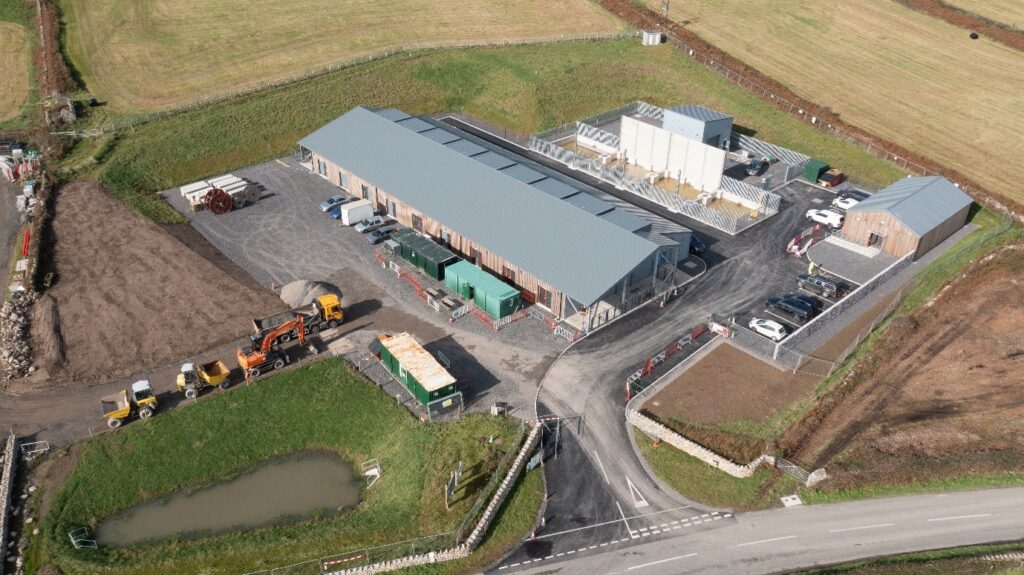
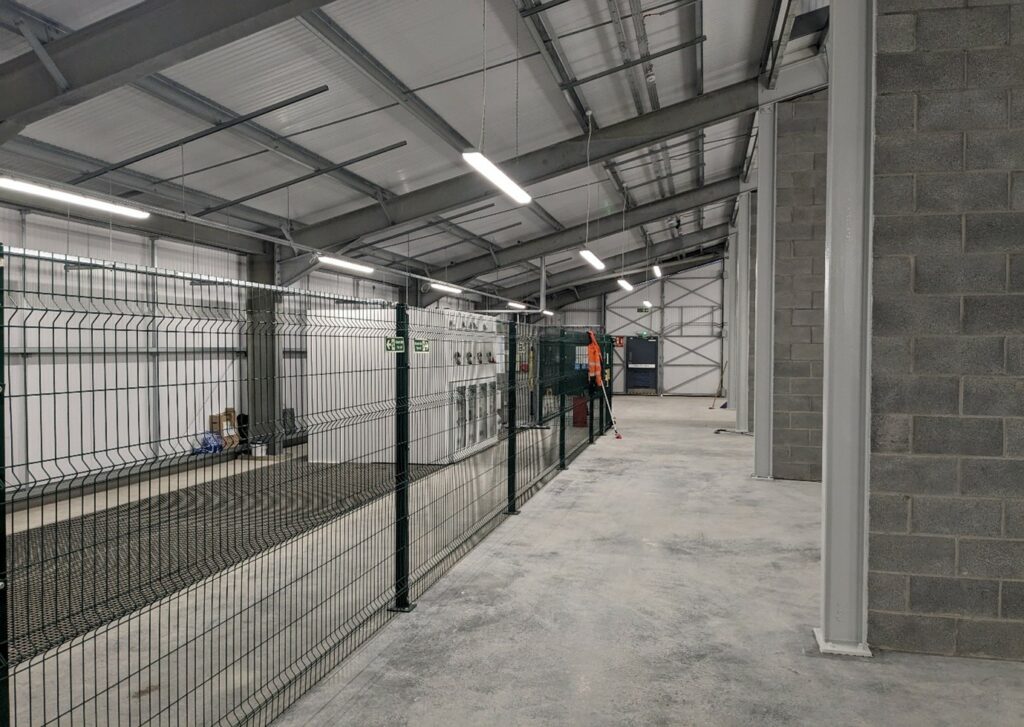
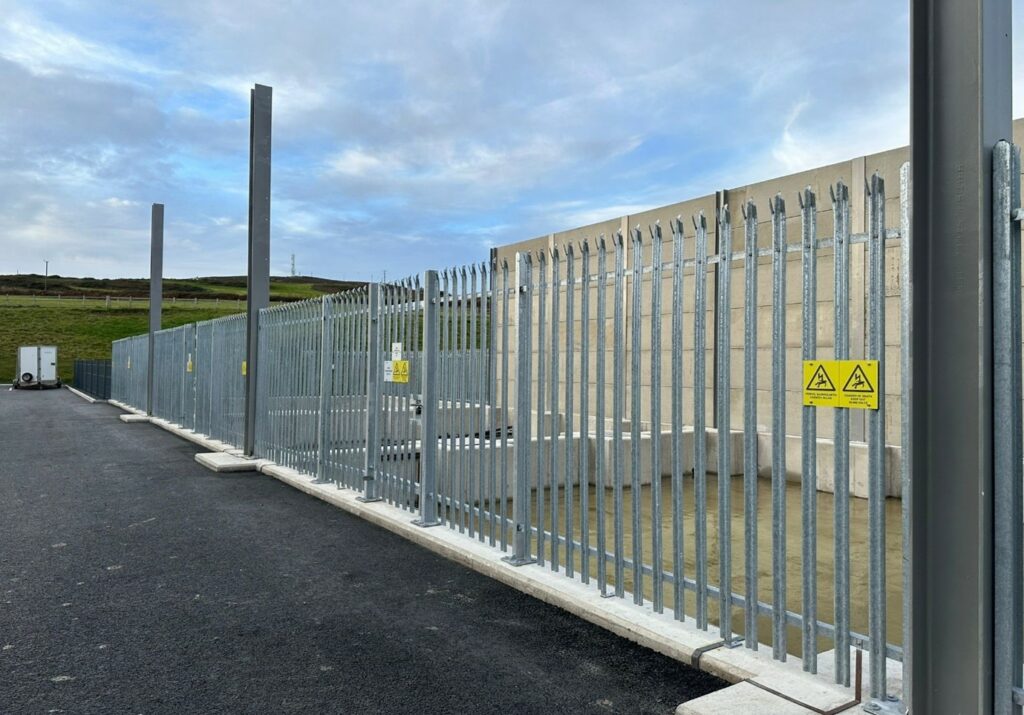
Powersystems partnerships
Jones Brothers are the Principal Contractor for this first phase. Powersystems were awarded the Subcontract for Electrical Design and Construction Works in connection with the Morlais Onshore Electrical Connection Package. The contract comprises three work packages:
- WP1A Scope of Works for Landfall Infrastructure
- WP1B Scope of Works for Onshore 132 kV Cable Route
- WP1C Scope of Works for 33 kV Substation
The scope includes all electrical infrastructure between two interfaces:
- Developer interface at the feeder terminals of the 33 kV switchboard at Landfall
- SPEN interface at the cable terminations onto the SPEN metering circuit breaker at Morlais Tidal
Morlais project timings:
The construction of Morlais commenced in October 2022, with Powersystems mobilising to the site and beginning work on key infrastructure components:
- October 2022 Powersystems began site mobilisation
- November 2022 Delivery of 132 kV cables
- December 2022 Installation of cables commenced
- April 2023 Completion of the 7 km 132 kV cable installation
- Summer 2023 Substation fit-out and 33 kV switchgear installation
- October 2023 Final commissioning and energisation of the Phase 1 infrastructure
What the client wanted:
The client’s primary objectives were to complete the project on time and within budget while ensuring that the infrastructure was designed to accommodate future expansion.
The client also wanted to:-
- Generate at least 100 MW electricity from tidal stream energy
- Create up to 100 new jobs for the region
- Generate up to £30 million net additional gross value added (GVA)
How Powersystems helped:
Powersystems engineers were involved with a design that allows expansion of the electrical infrastructure with minimum disruption to the current set up.
Instead of installing 7km of 33 kV cable, a 132 kV cable was installed which will be run at 33 kV and when the project is moved to the next phase, the cable can be utilised for the 132 kV connection. The 33 kV switch room at Landfall substation has been built and 33 kV switchgear installed to allow further development to be added to the system.
Efficient Design and Implementation: Designing the electrical infrastructure to allow for future phases with minimal disruption. The decision to install a 132 kV cable initially run at 33 kV was a key part of this strategy.
High Standards of Work: Delivering high-quality installation and commissioning services, which were highly praised by the client for professionalism and excellence.
- Electrical design
- Interface with SPEN for status and constraint signals
- Switchgear installation and commissioning
- Cables and containment design, supply and installation
- HV testing
- SAP provision
- SCADA system design, installation and commissioning
- Small power and lighting of the substations
Design works
Designing the system and carrying out electrical studies was a challenge as no developers were involved in the scheme at the time. Many assumptions and possibilities had to be considered at the design stage.
Installation works
The installation works took approx. 12 months. There were challenges along the 132 kV cable route having to pull and joint cables along a narrow road, close to the coastline through winter, where we were open to the elements.
The substation buildings were fitted out by Powersystems own specialist operative team, the client has since praised the professionalism and standard of works that were carried out at Morlais Tidal Energy project.
Commissioning works
The first phase of commissioning involved Powersystems commissioning the electrical equipment on site and setting up the protection scheme.
Following this, interface testing was carried out with SPEN to ensure the system was compliant with the DNO.
Final commissioning was completed as the system went Live.
Energisation works
The testing and energisation of Morlais Tidal energy project was carried out in cooperation with SPEN. Hellenic assisted with the 132 kV cable testing and Powersystems were then successfully able to energise the substation at Landfall.
The results:
The work was completed on time and on budget.

Environmental Benefit
- Low carbon power platform
- The £35m Morlais scheme will benefit local communities, the economy, and help tackle climate change – using renewable energy to generate clean, low carbon electricity.

Economic Benefit
- The scheme has already benefited the local economy by employing local contractors for the building of the site and have taken on some local people for the operational management and maintenance of the substation.
- Morlais could be a pioneering scheme that allows tidal technology to be developed and maybe one day utilised as a renewable source of power generation all around the world.
In Conclusion:
The Morlais Tidal Energy Project is a landmark development in the field of tidal energy, demonstrating the potential of tidal stream technology to contribute significantly to renewable energy generation. Powersystems’ expertise in designing, installing, and commissioning the electrical infrastructure has been instrumental in achieving the project’s objectives. As the largest consented tidal project globally, Morlais is set to play a pivotal role in advancing the renewable energy sector, with future phases poised to further enhance its impact.
For further updates on the Morlais Tidal Energy Project, visit the Morlais Energy News website.
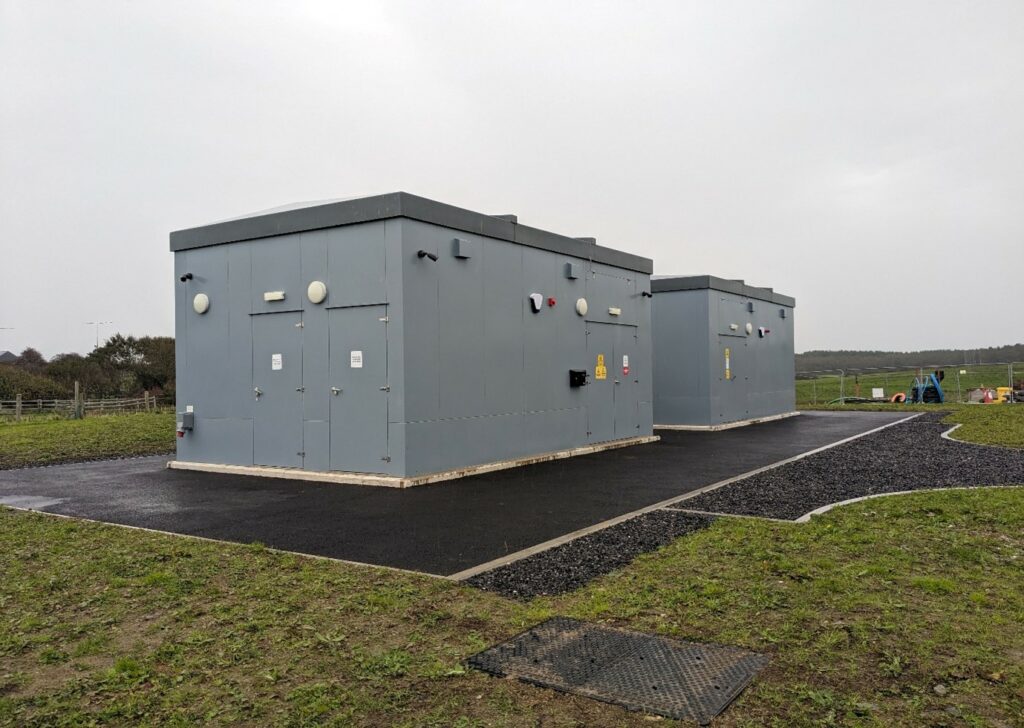
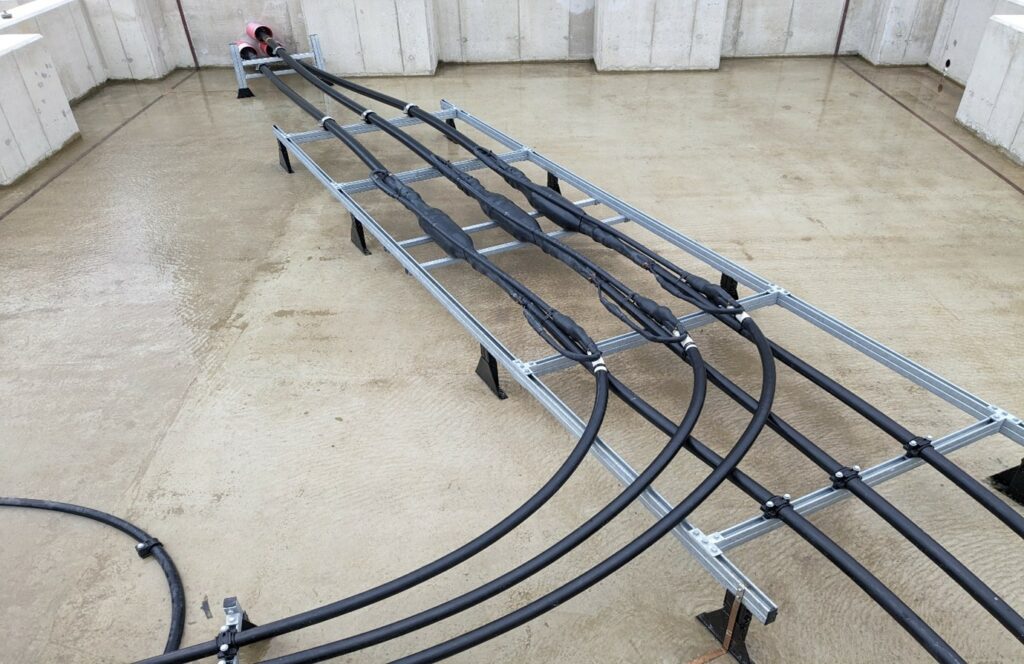
Speak to Powersystems Today
We would love to hear from you and talk through your projects with you

